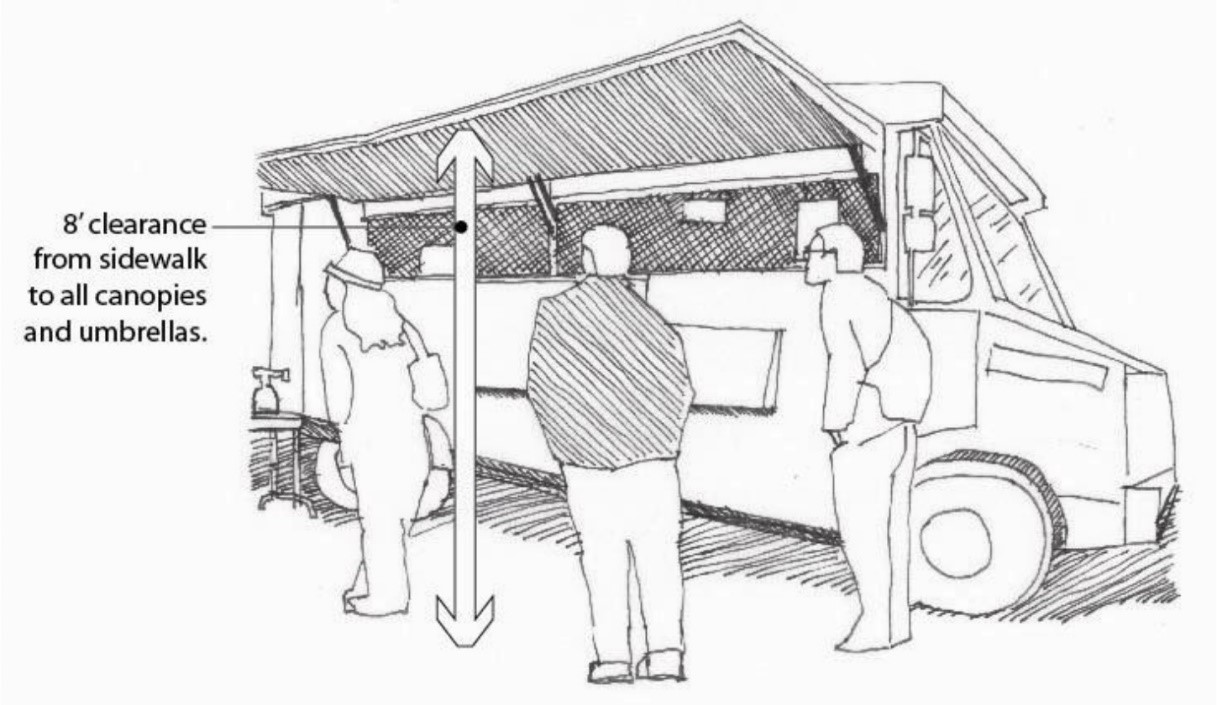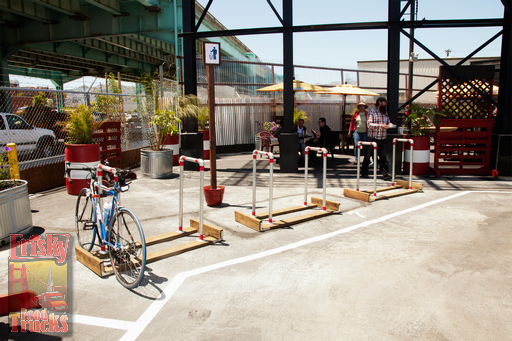By Jacqueline Vance, Assistant Planner at M-Group
Cities around the country are embracing the neighborhood vitality that food trucks can bring to an area, whether to an already bustling downtown or a vacant lot. However, balancing the protection of existing food establishments and incoming food truck vendors can present challenges for city planners and local business owners alike. But, if the balance can be struck, food trucks have the ability to positively transform communities.
A food truck, by definition, is a vehicle equipped for cooking and selling food. Although a food truck may provide products similar to those served in a typical food establishment, they lack many of the necessary facilities to accommodate patrons. One of the most challenging aspects cities face in allowing mobile food businesses to settle is analyzing these new land uses against zoning ordinances that omit relevant development standards. Zoning ordinances typically prescribe parking standards, height limits, setbacks, and other development requirements for the more typical brick and mortar food businesses, but lack standards that planners can apply to a non-stationary use. For instance, say a clustered arrangement of multiple food trucks wants to open for business on private property, how much parking should the food businesses provide its customers?
Luckily, there are cities that are getting food-truck regulations right that we can look to for guidance. Many jurisdictions have set specific standards for these uses, effectively addressing concerns for quality of life, competitive business enterprise, and aesthetics. Such guidelines have presented key commonalities between cities’ approach to the issue, including typical criteria that mobile food vendors must abide by, such as:
- locating trucks away from schools, public parks, or established eateries;
- providing fully functioning restrooms;
- obtaining city business licenses and mobile operations permits;
- complying with State and Federal health regulations;
- locating trucks away from parking-impacted neighborhoods;
- complying with specific hours of operations (e.g. 10am to 9pm);
- serving food in biodegradable packaging;
- providing trash and recycling on-site; and
- providing vehicle and bicycle parking for customers.
Although many cities lack specific regulations for operating food trucks on private property, some have authored comprehensive guidelines to ensure impartial development standards for food businesses. These standards have included permanent restroom facilities, on-site parking compliant with ADA regulations, paved access routes, fencing, landscaping, and setback standards which businesses implement accordingly..
Some jurisdictions have taken it a step further and are considering developing a specific land use designation for food trucks, which would dictate the location and development requirements of such uses. The City of Seattle’s Department of Transportation created Design Guidelines for food trucks and other mobile food vendors, focusing on appearance, waste management, sustainability, canopies and awnings, signage, and lighting. It is now possible to order your lunch from a restaurant on wheels with solar panels, composting, and LED lighting!
An added consideration critical in determining the success and applicability of introducing food trucks into a local economy is community input. Some cities have implemented programs to gauge community support such as administering community surveys and conducting pilot studies. Although outside of the US, the City of Vancouver, British Columbia utilized ranking systems and taste tests to assign scores and grant use permits in a competitive process. These programs have facilitated the popularity and feasibility of food trucks for specific communities.
Food trucks have gained popularity in recent years, and only time will tell whether they can withstand the changing environment of development regulations. When experimenting with regulating food trucks, cities must oversee these uses with due diligence while allowing for flexibility and ingenuity. One thing is for sure: food trucks have proven to be a valuable asset for many cities in creating a strong sense of place and bringing energy to an area, when carried out appropriately. Ultimately, it is up to local jurisdictions to determine whether these trendy mobile restaurants can seamlessly integrate with an established local commerce.
References:
- No Vacancy! A Guide to Creating Temporary Projects in the Central Eastside Industrial District, Central Eastside Industrial Council, Portland OR, http://novacancyproject.files.wordpress.com/2009/06/how-to_low-res.pdf
- Oakland Municipal Code, Chapter 5.49 – Pushcart Food Vending Pilot Program, City of Oakland CA, https://library.municode.com/HTML/16308/level2/TIT5BUTAPERE_CH5.49PUFOVEPIPR.html
- Oakland Mobile Food Vending Regulations, Announcements, News, Food Vending Locations and more, Planning and Zoning, City of Oakland CA, http://www2.oaklandnet.com/Government/o/PBN/OurOrganization/PlanningZoning/OAK032864
- Street Food Vending, City of Vancouver CANADA http://vancouver.ca/people-programs/street-food-vending.aspx
- Mobile Food Program, Department of Environmental Health, County of San Diego CA, http://www.sandiegocounty.gov/content/sdc/deh/fhd/mobilefood.html
- Patterson Municipal Code, Chapter 5.10 – Vending on Streets, Sidewalks and Private Property, City of Patterson CA, http://www.codepublishing.com/CA/Patterson/html/Patterson05/Patterson0510.html
- Director’s Rule 6-2012: Design guidelines for vending carts and food vehicles permitted by the Seattle Department of Transportation Street Use Division, City of Seattle WA, http://www.seattle.gov/transportation/docs/dr/SDOT%20Director's%20Rule%206-2012.pdf
- Street-Food Vending, Office of Economic Development, City of Seattle WA, http://www.seattle.gov/economicdevelopment/mobilefood/
- Food Truck Laws by City and State, http://www.foodtrucklaws.com/laws.html







